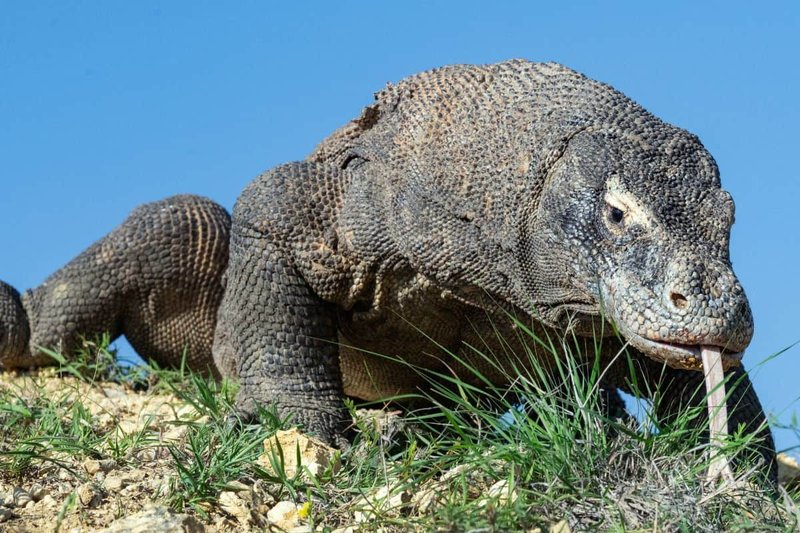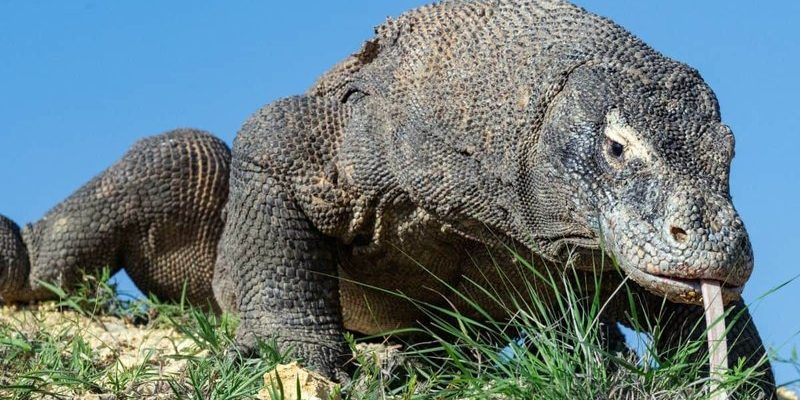
Picture this: you’re roaming the rugged terrain of Komodo Island, watching these great lizards bask in the sun. It’s a breathtaking sight, but it’s also a reminder that this unique habitat is becoming increasingly fragile. As habitats shrink and human encroachment increases, the survival of the Komodo dragon rests on a delicate balance. In this article, we’ll explore the status of the Komodo dragon, the factors contributing to its endangerment, and the various efforts being made to secure its future.
What Makes the Komodo Dragon Unique?
The Komodo dragon (Varanus komodoensis) is the largest living lizard on Earth, capable of growing up to 10 feet long and weighing over 150 pounds. Their powerful bodies and keen hunting skills make them apex predators in their natural habitats. But it’s not just their size that sets them apart; they possess unique adaptations that aid in their survival.
For starters, Komodo dragons have a keen sense of smell and can detect carrion from miles away. They use their long, forked tongues to sample the air, much like snakes do. This ability helps them locate food, primarily large mammals like deer and wild boar. Additionally, their bite is filled with a cocktail of venom, which can cause shock and paralysis in their prey, making them effective hunters.
Another fascinating aspect is their reproductive strategy. Female Komodo dragons can reproduce through a process known as parthenogenesis, laying eggs without mating if no males are available. This means that in dire situations, a female can ensure the continuation of her lineage, albeit with limited genetic diversity.
Current Endangered Status of the Komodo Dragon
You might be wondering, “So, is the Komodo dragon endangered?” The answer is yes. Currently, the International Union for Conservation of Nature (IUCN) classifies the Komodo dragon as vulnerable, which means they are at risk of becoming endangered unless circumstances improve. The population is estimated to be around 3,000 to 5,000 individuals, and numbers are declining.
There are several factors contributing to their precarious status. Habitat destruction due to human activities, including tourism, agriculture, and urban development, plays a significant role. As humans encroach on their territory, food resources become scarcer, leading to competition and stress among the dragon population.
Moreover, climate change is a silent threat. Fluctuations in temperature and sea levels can directly impact their habitat and the availability of prey. This dual threat of habitat loss and climate change puts immense pressure on an already vulnerable species.
Threats to the Komodo Dragon’s Survival
Understanding what threatens the Komodo dragon is essential for grasping the urgency of conservation efforts. Here’s a closer look at the main culprits:
- Habitat Loss: As mentioned, human activities, like deforestation and land use for agriculture, are shrinking the Komodo dragon’s natural habitat.
- Poaching: While hunting these lizards is illegal, it still occurs, with the dragons sometimes hunted for their skins and meat.
- Climate Change: Rising temperatures and changing rainfall patterns affect both Komodo dragons and their prey, creating food shortages and altering their ecosystem.
- Invasive Species: Animals that aren’t native to their environment can compete with Komodo dragons for resources.
In a way, the plight of the Komodo dragon feels like a microcosm of broader environmental issues. Their struggle highlights the urgent need for awareness and action to protect not just this remarkable species but also the ecosystems they inhabit.
Conservation Efforts for the Komodo Dragon
Fortunately, there’s good news! Numerous conservation efforts are underway to protect the Komodo dragon and its habitat. Organizations, both local and international, are stepping up to the plate to ensure these magnificent creatures don’t vanish from our planet.
One of the most significant initiatives is the Komodo National Park, established in 1980, which serves as a protected area for the dragons. This park provides a safe haven, helping maintain their population and allowing for eco-tourism that educates visitors about the species while minimizing human impact.
Additionally, local communities are becoming more involved in conservation efforts. Education programs help residents understand the importance of protecting the Komodo dragon and its role in the ecosystem. By promoting sustainable practices, communities can thrive without damaging the environment.
Scientific research is also vital. Conservationists are using modern technology to monitor Komodo dragon populations and understand their behaviors and needs better. This data is essential for creating effective management plans to ensure their survival.
How You Can Help the Komodo Dragon
You might be thinking, “What can I do to help?” It’s great that you want to make a difference! Here are some ways you can support the conservation of the Komodo dragon:
- Educate Yourself and Others: Learn about the challenges faced by the Komodo dragon and share this knowledge with friends and family.
- Support Conservation Organizations: Consider donating to or volunteering with organizations focused on protecting wildlife and their habitats.
- Practice Responsible Tourism: If you plan to visit Komodo National Park, follow guidelines and respect the environment and local communities.
- Advocate for Policy Change: Support legislation that protects endangered species and their habitats.
Even small actions can have a big impact when it comes to conservation. Every bit helps in the fight to ensure the Komodo dragon continues to roam the Earth for generations to come.
The Future of the Komodo Dragon
The future of the Komodo dragon is uncertain, but it’s not too late to turn the tide. With continued conservation efforts, increasing awareness, and community involvement, there’s hope. The fight against habitat destruction and climate change is crucial, and every effort counts.
You might feel overwhelmed by the scale of the issues at hand, but remember, change often starts small. Whether through education, advocacy, or responsible tourism, each of us can play a role in ensuring that this incredible creature does not disappear.
In summary, the Komodo dragon is indeed endangered due to a combination of habitat loss, climate change, and human activities. However, with dedicated conservation efforts and your support, we can make a significant difference in the lives of these spectacular lizards. The journey to protect the Komodo dragon is not just about saving one species; it’s about preserving biodiversity and the relationships within ecosystems that sustain life on our planet. Let’s work together to ensure that future generations have the chance to marvel at the Komodo dragon in the wild.

